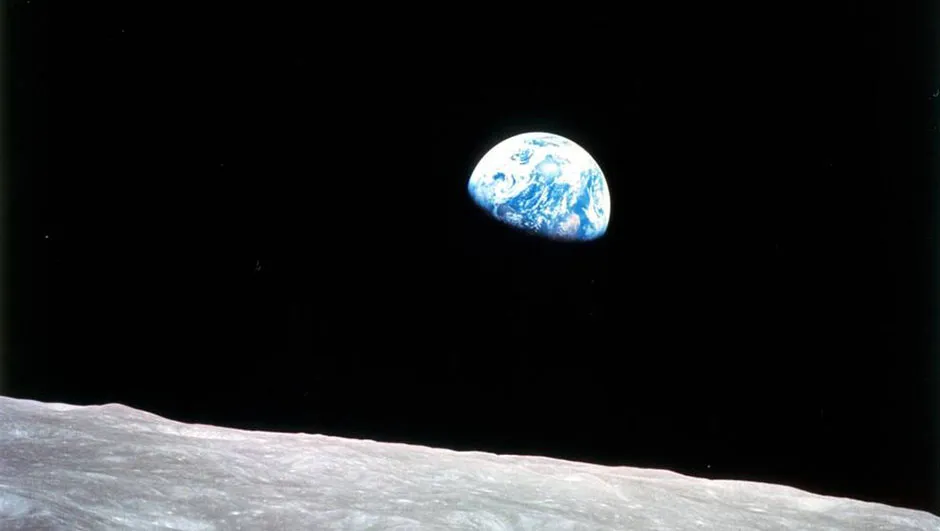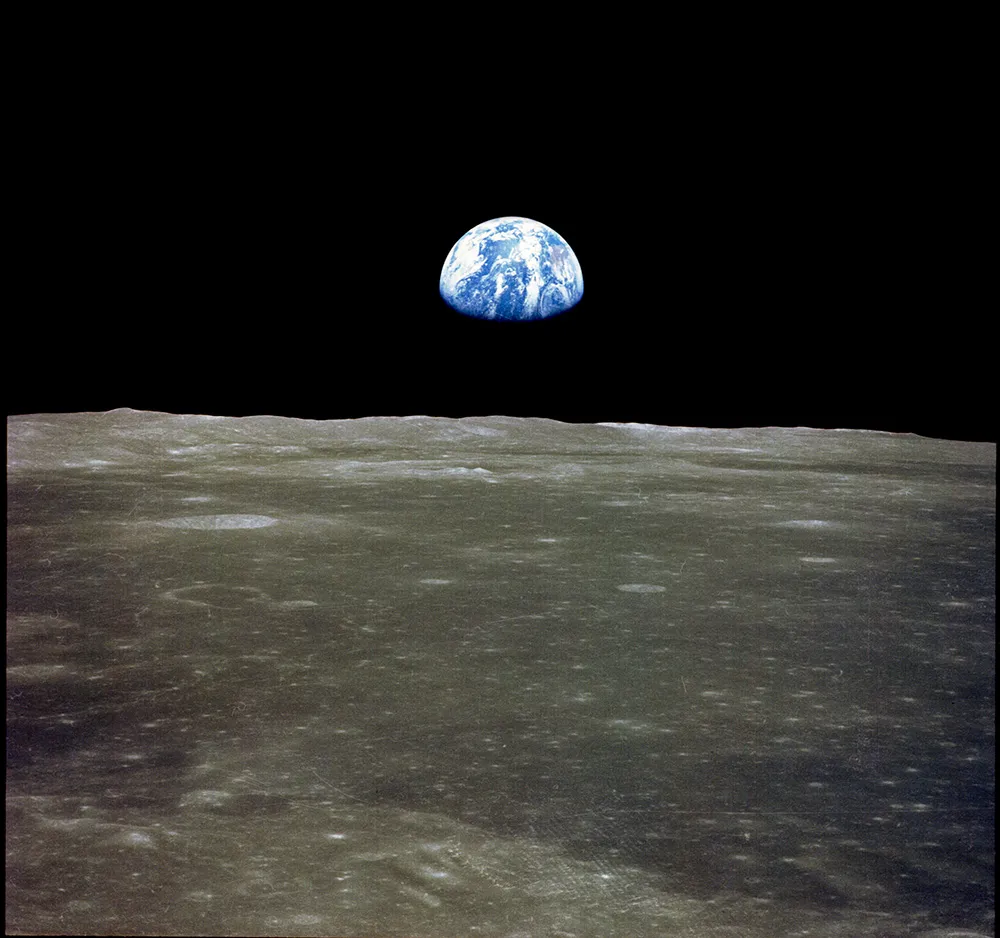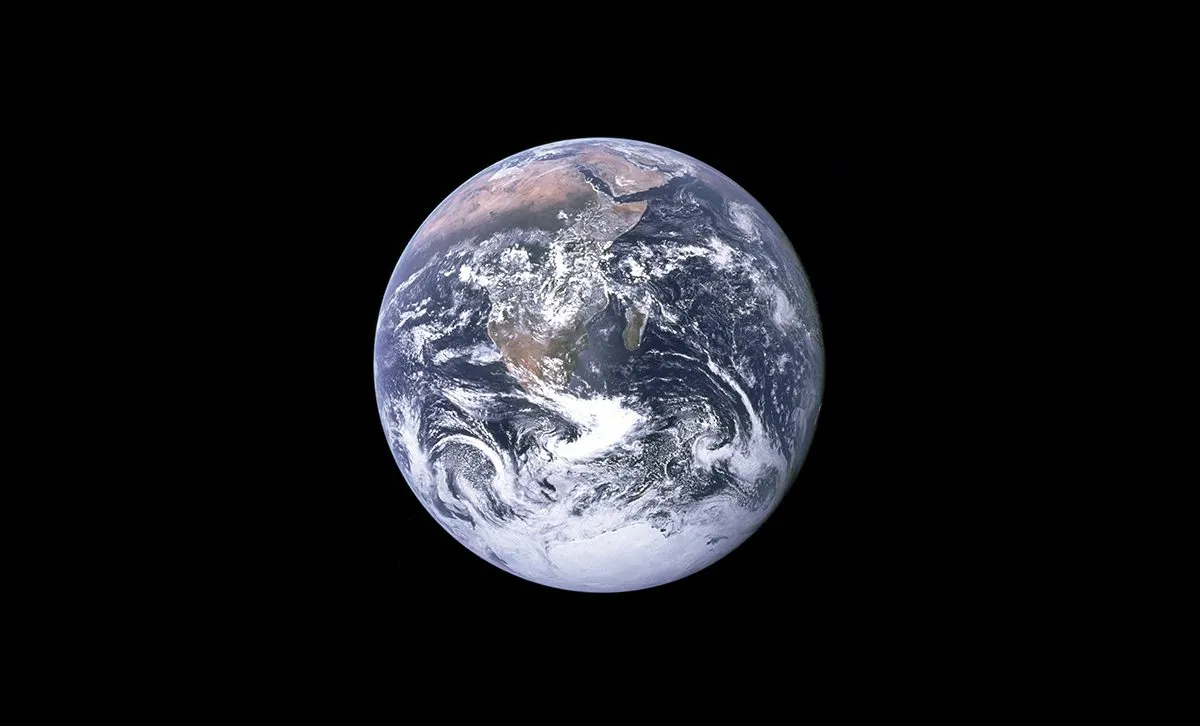When we look up at the night sky, we can see other planets with the naked eye: Venus, Mars, Jupiter, Saturn and other Solar System bodies appear as bright dots, visible even without the need for binoculars or a telescope.
It's amazing to think that we can actually see these distant worlds with our own eyes, but have you ever wondered what Earth would look like when viewed from other planets of the Solar System?
More Earth from space

If future generations colonise the Moon and Mars, or send crewed spacecraft out to Saturn and Jupiter, what would it be like to see Earth, our home planet, in the night sky?
Luckily, multiple space missions have sent back amazing images of our planet.
Let's embark on an interplanetary journey to see how Earth looks from different Solar System bodies.
Earth from the Moon

Perhaps the most famous image of Earth captured from another planetary body is the Earthrise image by the Apollo 8 crew, taken during their journey around the Moon on Christmas Eve 1968.
But the Apollo 8 astronauts weren't the only ones to photograph Earth from the Moon.
The Apollo 11 crew captured an image entitled 'Earthrise' that shows what it would be like to stand on the surface of the Moon and see Earth rising above the horizon.
From the Moon, the Earth exhibits phases, just as the Moon does from Earth.

In the image below, captured in 1972 by the Apollo 17 astronaut Gene Cernan – known as the 'last man to walk on the Moon' – Earth appears as a 'blue marble' shining brightly against the inky blackness of space.

Earth from Mercury
The image below shows what Earth looks like as seen from Mercury, the closest planet to the Sun.
NASA’s Mercury Surface, Space Environment, Geochemistry, and Ranging (MESSENGER) spacecraft captured this view of Earth and the Moon on 6 May 2010 from a distance of 183 million km (114 million miles).
From the spacecraft’s perspective, Earth and the Moon can be seen near the boundary of the constellations Libra and Scorpius.

Earth from Mars
Humans haven't landed on Mars (yet), but we have sent multiple rovers and orbiters to the Red Planet.
They've been exploring Mars for decades now and have sent back all manner of amazing images showing rocks, river beds and other geological features.
They've also been able to send back images of Earth, as it appears in the Martian sky.

In the image above showing Earth from Mars, captured by NASA's Curiosity rover, our planet appears like a bright star in the sky.
And the image below, captured by the Mars Global Surveyor space probe, shows Earth and our Moon in the same view.

Another image by the Curiosity rover shows not only Earth, but also Mars's moon Phobos in the Martian sky, too.
On Earth, we often see planets such as Venus or Jupiter appear close to the Moon. This is known as a conjunction.
It's incredible to think that future stargazers on Mars might see similar conjunctions of Earth and Mars's moons.

Earth from Saturn
Spacecraft even further away than Mars have been able to look back and see our planet.
The Cassini spacecraft captured the image below of Earth, as seen from Saturn.
This is a picture of our home planet from a distance of about 1,450km (900 miles).
Earth is a tiny blue dot, just about visible through the ice and dust of Saturn's rings.
Our planet is the brightest 'star' in the sky, shining a beautiful blue hue; a beacon of life against a dark, never-ending cosmos.

The image is entitled ‘The Day The Earth Smiled’, and was taken on 19 July 2013.
It was part of a campaign by the NASA Cassini team – in particular the imaging team leader Carolyn Porco – that encouraged people to look up at the exact time the image was being taken and smile back.
Earth from the depths of the Solar System
The Voyager mission was the first 'grand tour' of our Solar System.
Two spacecraft were launched to venture across our cosmic neighbourhood and capture images of the planets and their moons.
One of the leading figures in the Voyager mission was, of course, the late Carl Sagan, who conceived of an idea to get the spacecraft to look back and capture Earth from a great distance.

The resulting image, known as 'The Pale Blue Dot', shows Earth from a distance of 6 billion km (3.7 billion miles) from the Sun and was captured by Voyager 1 on 14 February 1990.
It's one of the most famous images of Earth from space.
As well as being one of the greatest images in the history of science, Sagan managed to make it speak to our humanity, too.
It inspired the title of Carl Sagan's book 'Pale Blue Dot: A Vision of the Human Future in Space', in which he ponders how the trials and tribulations that seem so monumental to us on Earth, pale in comparison to the vastness of the cosmos.
What are your favourite pictures of Earth from space? Let us know by emailing contactus@skyatnightmagazine.com.
